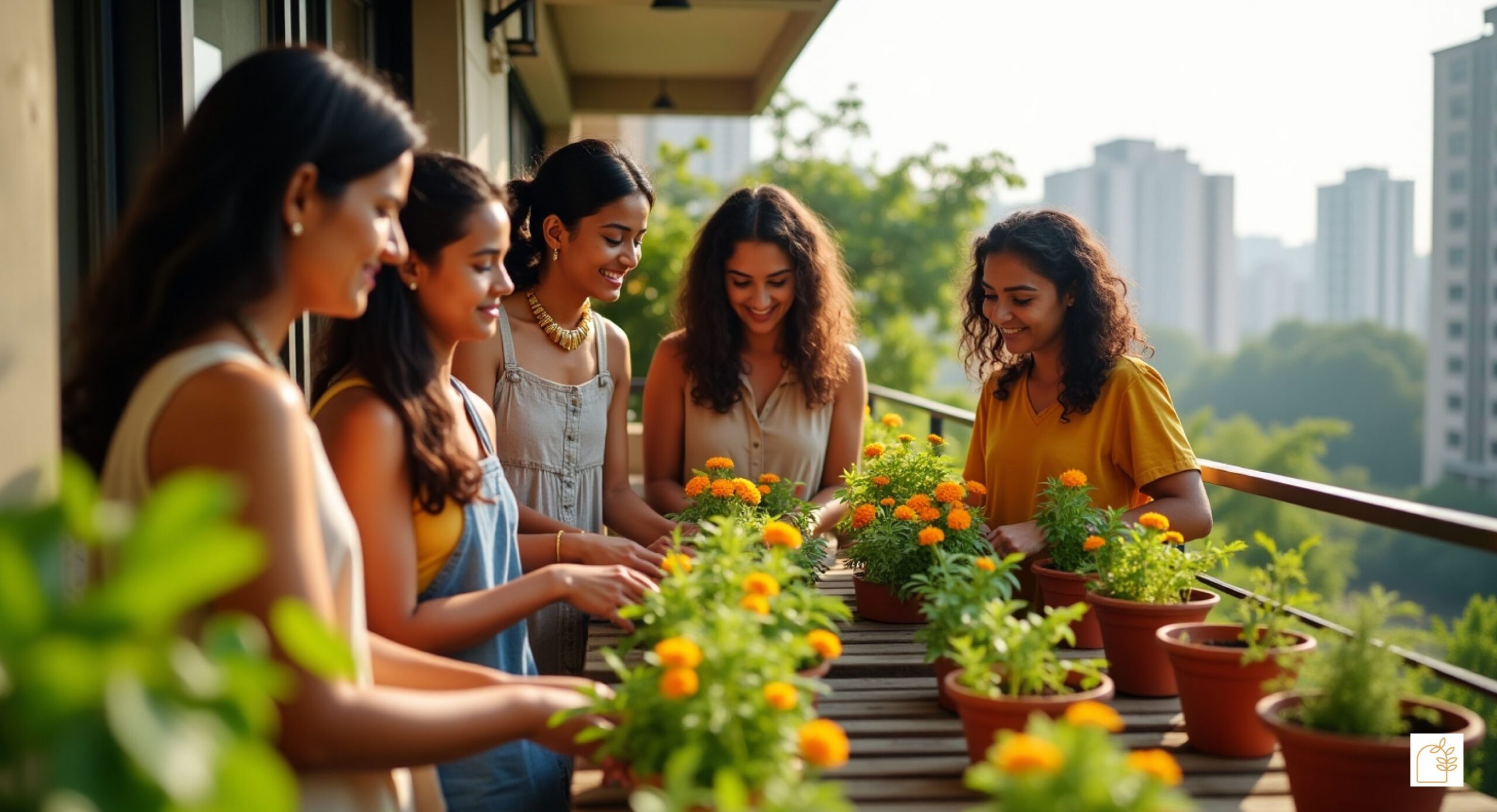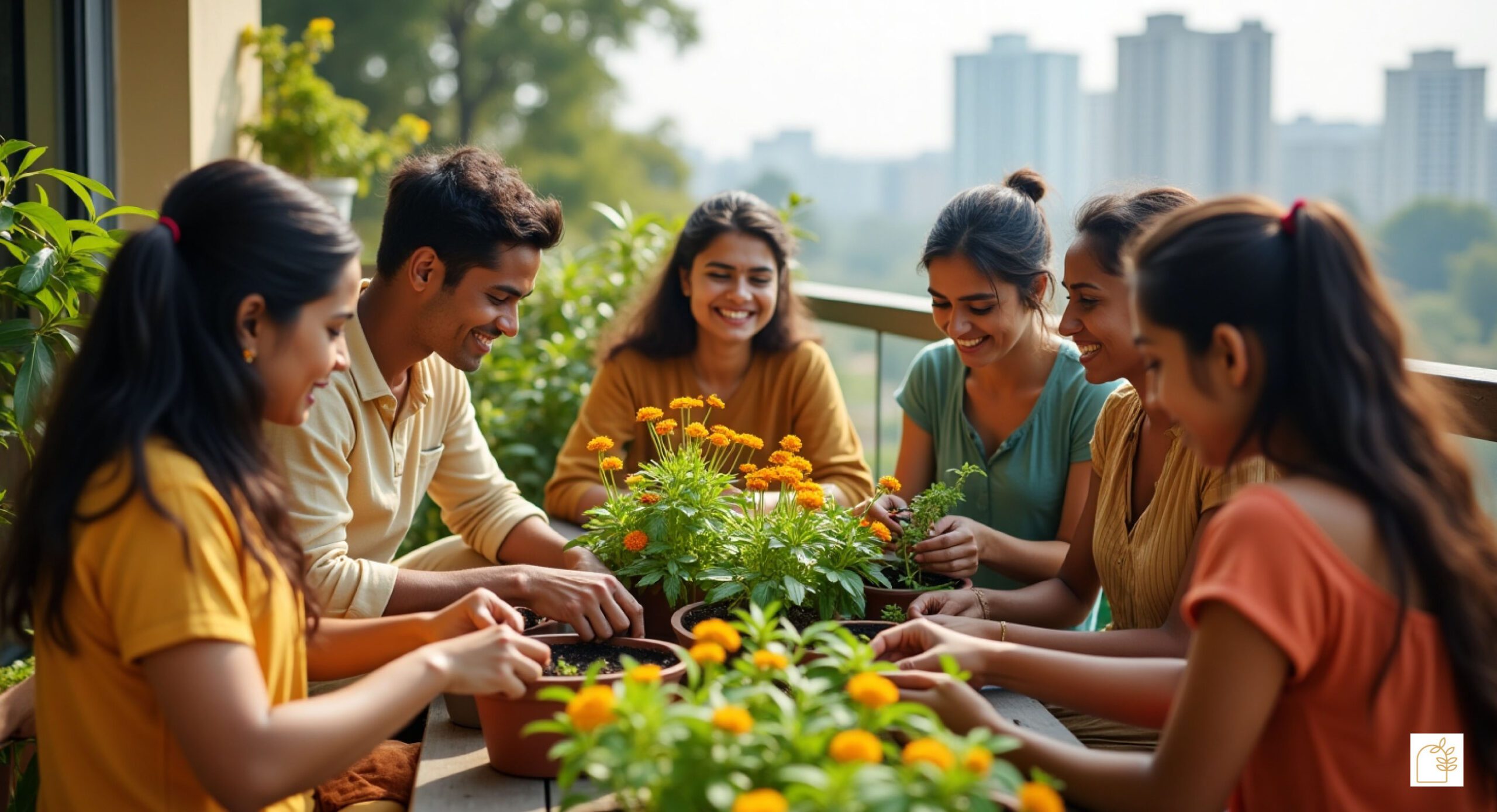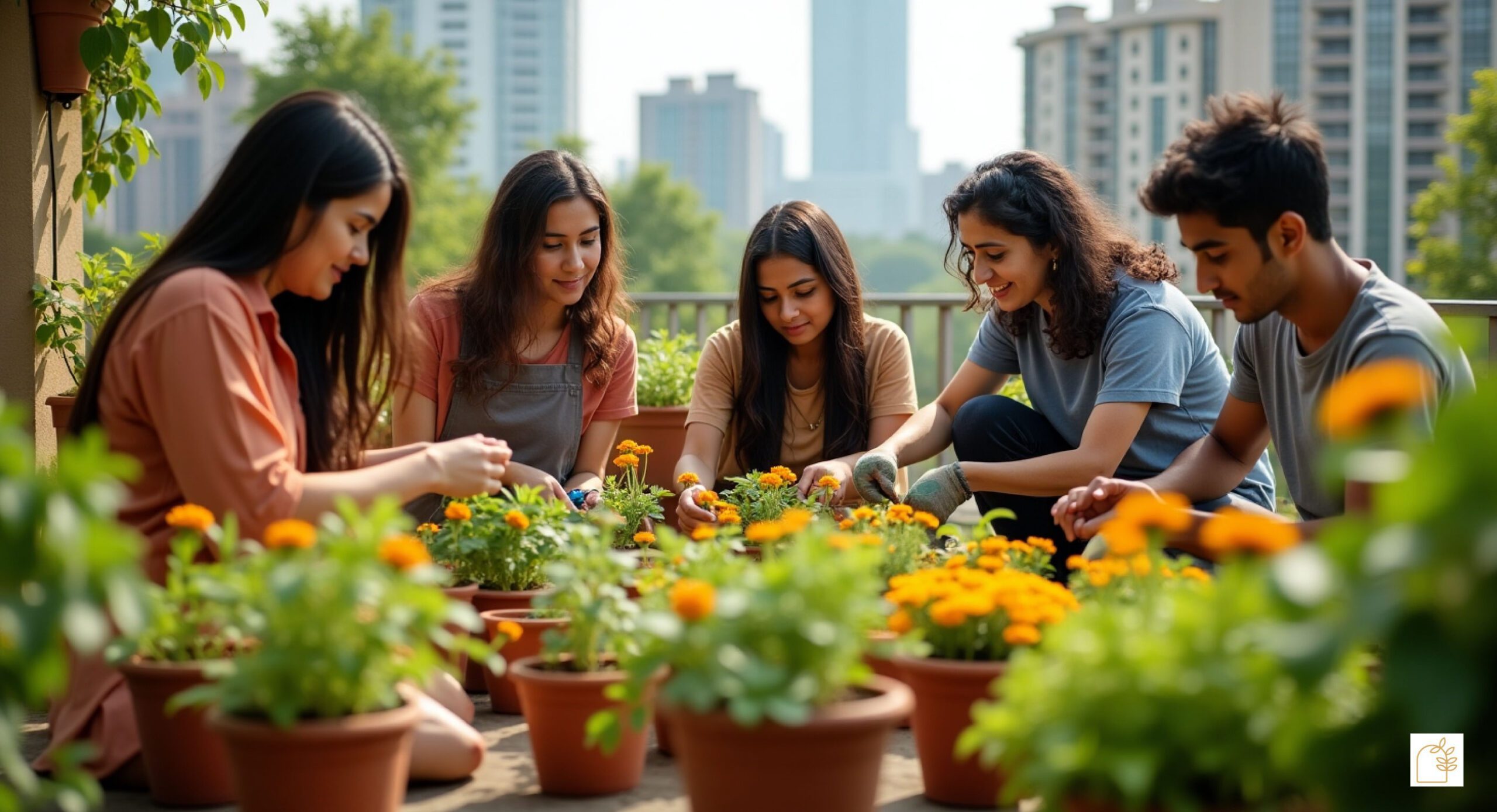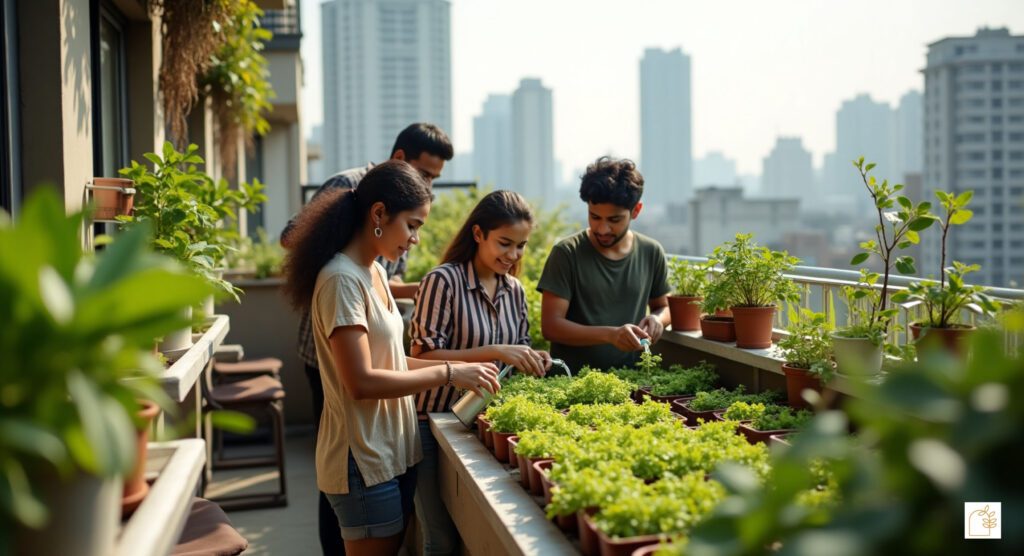In 2025, native plants are at the heart of sustainable gardening in India, supporting local ecosystems, conserving resources, and boosting biodiversity. With 70% of India’s population living in urban areas (Knight Frank, 2024) and 3,500 IGBC-certified green projects promoting eco-friendly practices (FICCI, 2024), native plants are a perfect fit for gardens, balconies, and community spaces in cities like Bengaluru, Mumbai, and Tier-2 hubs like Coimbatore. These plants thrive in India’s diverse climates, require less water, and support pollinators like bees, vital for 80% of the country’s crops (Krishi Jagran, 2024).
Why Native Plants Matter for Local Ecosystems in 2025

Native plants are species naturally occurring in a region, adapted to its climate, soil, and wildlife. In India, where urbanization and rising temperatures (1.5°C above pre-industrial levels, IMD, 2024) strain resources, native plants reduce water use by 50% compared to exotics (Down to Earth, 2024) and support biodiversity. With 60% of urban Indians adopting green hobbies (Financial Express, 2024), these plants are ideal for small spaces (50–100 sq. ft.) and align with India’s 100,000 startup-driven sustainability initiatives (MSME Ministry, 2024). From supporting pollinators to reducing maintenance costs, native plants foster resilient ecosystems in urban and rural settings.
As a horticulture expert, I’ve helped gardeners across India cultivate native species. This guide highlights seven native plants for India’s ecosystems and practical tips for incorporating them into your garden in 2025.
Best Native Plants for India’s Local Ecosystems
1. Neem (Azadirachta indica)
Region: Nationwide, thrives in arid and semi-arid climates.
Benefits: Repels pests, purifies air, medicinal properties.
Care: Low water, full sun, well-drained soil.
Neem trees, revered in Indian culture, support ecosystems by repelling pests naturally, reducing pesticide use. Their shade cools urban areas like Delhi, and seeds cost ₹50–₹100/packet (NurseryLive, 2025).
Actionable Tip: Source neem saplings at nurserylive.com for backyard planting.
2. Indian Coral Tree (Erythrina variegata)
Region: Coastal and tropical areas (Kerala, Tamil Nadu).
Benefits: Attracts birds, butterflies, improves soil fertility.
Care: Moderate water, sunny spots, loamy soil.
This vibrant tree, with red flowers, supports pollinators and adds aesthetic appeal to Mumbai’s coastal gardens. It grows 10–15 feet, ideal for small plots (Krishi Jagran, 2024).
Actionable Tip: Buy coral tree seeds at trustbasket.com.
3. Marigold (Tagetes erecta)
Region: Nationwide, adaptable to all climates.
Benefits: Repels pests, attracts bees, low maintenance.
Care: Minimal water, full sun, well-drained soil.
Marigolds are a staple in Indian gardens, thriving in 50 sq. ft. spaces. Their pest-repelling properties protect vegetables like tomatoes, making them perfect for urban balconies (Down to Earth, 2024).
Actionable Tip: Purchase marigold seeds (₹50/packet) at nurserylive.com.
4. Curry Leaf (Murraya koenigii)

Region: South and West India (Karnataka, Gujarat).
Benefits: Culinary use, attracts pollinators, air purifier.
Care: Moderate water, partial shade, fertile soil.
Curry leaf plants grow well in pots, ideal for Bengaluru apartments. They support bees and provide fresh herbs, reducing grocery costs by ₹500/month (Financial Express, 2024).
Actionable Tip: Get curry leaf plants at trustbasket.com.
5. Hibiscus (Hibiscus rosa-sinensis)
Region: Nationwide, thrives in tropical and subtropical areas.
Benefits: Attracts butterflies, hummingbirds, ornamental value.
Care: Regular water, full sun, loamy soil.
Hibiscus flowers add color to small gardens and support pollinators. They’re low-maintenance, perfect for 100 sq. ft. terraces in Pune (Krishi Jagran, 2024).
Actionable Tip: Shop for hibiscus saplings at nurserylive.com.
6. Indian Basil (Ocimum tenuiflorum)
Region: Nationwide, ideal for all climates.
Benefits: Medicinal, repels mosquitoes, supports pollinators.
Care: Low water, full/partial sun, well-drained soil.
Tulsi, a sacred plant, thrives in pots and repels pests, making it ideal for urban homes. It supports bees and improves air quality in polluted cities like Delhi (Down to Earth, 2024).
Actionable Tip: Buy tulsi seeds (₹60/packet) at trustbasket.com.
7. Banyan (Ficus benghalensis)
Region: North and Central India, adaptable to semi-arid zones.
Benefits: Provides shade, supports birds, carbon sequestration.
Care: Low water, full sun, spacious soil area.
Banyan trees, India’s national tree, support diverse wildlife and cool urban areas like Jaipur. They’re best for community spaces or large backyards (FICCI, 2024).
Actionable Tip: Source banyan saplings at nurserylive.com for community gardens.
Native Plants Comparison Table 2025
| Plant | Region | Benefits | Care Needs |
|---|---|---|---|
| Neem | Nationwide | Pest repellent, air purifier | Low water, full sun |
| Indian Coral Tree | Coastal, tropical | Attracts birds, butterflies | Moderate water, loamy soil |
| Marigold | Nationwide | Pest repellent, bee-friendly | Minimal water, full sun |
| Curry Leaf | South, West India | Culinary, pollinator-friendly | Moderate water, partial shade |
| Hibiscus | Nationwide | Attracts butterflies, ornamental | Regular water, full sun |
Benefits of Native Plants for Local Ecosystems
- Water Conservation: Native plants use 50% less water than exotics, saving ₹2,000 annually (Krishi Jagran, 2024).
- Biodiversity: Support 80% of India’s pollinator-dependent crops (Down to Earth, 2024).
- Low Maintenance: Require minimal fertilizers, reducing costs by ₹1,000/month (Financial Express, 2024).
- Climate Resilience: Thrive in India’s diverse climates, from arid Rajasthan to humid Kerala.
Actionable Tip: Start with marigolds or tulsi for easy, low-cost gardening in small spaces.






2 thoughts on “Best Native Plants for Local Ecosystems in India 2025: Grow Green, Support Biodiversity”